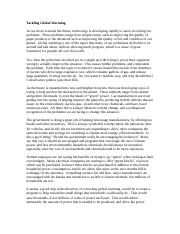The carbon cycle is a natural process that involves the transformation and movement of carbon through various reservoirs. These reservoirs include the atmosphere, oceans, soil, and living organisms. Although this cycle is vital for life on Earth, human activities have significantly disrupted its balance, leading to a myriad of environmental challenges—including climate change, ocean acidification, and biodiversity loss. Understanding the nuances of the carbon cycle is crucial for grasping the overall dynamics of our planet, particularly concerning global warming.
At the crux of the carbon cycle lie the processes of carbon fixation, respiration, decomposition, and combustion. Carbon fixation occurs primarily through photosynthesis, wherein plants and phytoplankton utilize sunlight to convert carbon dioxide (CO2) from the atmosphere into organic compounds. This complex process is foundational for all life, as it provides the energy necessary for growth and sustenance. However, the delicate equilibrium of this system is in jeopardy due to the surplus CO2 emissions generated by human activities such as fossil fuel combustion, deforestation, and industrial processes.
The ramifications of an overwhelmed carbon cycle are profound. As atmospheric CO2 levels rise, so too do the average global temperatures, a phenomenon commonly referred to as global warming. The increase in temperature affects weather patterns and enhances the frequency and intensity of extreme weather events, such as hurricanes, droughts, and heatwaves. This cascading effect not only endangers ecosystems but also threatens human livelihoods and food security.
In the oceans, excess CO2 leads to acidification, a process that alters the chemical composition of seawater. The dissolution of CO2 in seawater forms carbonic acid, which decreases the pH level of the water. This shift poses significant risks to marine life, particularly organisms with calcium carbonate shells or skeletons, such as corals and certain shellfish. As coral reefs—often considered the rainforests of the sea—diminish, the entire marine ecosystem suffers, including the myriad species that rely on these vibrant habitats for shelter and nourishment.
Conversely, the soil component of the carbon cycle offers a glimmer of hope. Healthy soils are capable of sequestering substantial amounts of carbon through a process known as soil carbon storage. Organic matter in soil, created from decomposed plant and animal materials, can bind with carbon, serving as a carbon sink. Promoting sustainable agricultural practices—such as cover cropping, reduced tillage, and agroforestry—can enhance soil health and increase its carbon storage potential. Therefore, a paradigm shift towards regenerative agriculture is not just an ecological necessity; it also holds promise for mitigating climate change.
However, addressing the carbon cycle’s crisis requires a multifaceted approach. Reversing the perilous trajectory of climate change necessitates both collective action and individual responsibility. Transitioning to renewable energy sources—solar, wind, and hydro—can significantly diminish reliance on fossil fuels, thereby reducing CO2 emissions. Additionally, advocating for policies that protect forests and promote reforestation efforts can enhance carbon sequestration capabilities while preserving vital biodiversity.
Education and awareness are also instrumental in this endeavor. By fostering a deep understanding of the carbon cycle and its implications, individuals can make informed choices that contribute to the greater good. It is imperative that communities engage in discussions about sustainable practices, advocating for changes that benefit the environment and promote resilience against climate impacts.
The interconnectedness of the carbon cycle with our planet’s health underscores the importance of a holistic perspective. It is essential to recognize that every action we take, whether at the local or global level, can influence this intricate system. Indeed, the carbon cycle is not merely an environmental concern; it is a reflection of the relationship between humanity and the Earth.
The catalysts for change lie within our reach. Businesses can innovate by adopting sustainable technologies, while policymakers can implement regulations that prioritize climate resilience. Partnerships between governments, private sectors, and civil society can facilitate the development of robust strategies aimed at restoring the balance of the carbon cycle.
Moreover, innovations such as carbon capture and storage (CCS) technology offer promising avenues for reducing atmospheric CO2 levels. By capturing carbon emissions from industrial processes and storing them underground or utilizing them in new products, we can actively contribute to restoring the carbon cycle’s equilibrium.
Ultimately, it is crucial to understand that addressing the carbon cycle’s crisis is not merely about averting a catastrophe; it is a unique opportunity to cultivate a sustainable future. As guardians of this planet, we hold the power to make choices that reflect our commitment to ecological stewardship. By engaging with the complexities of the carbon cycle, we can unlock solutions that not only preserve our environment but also ensure the prosperity of future generations.
In conclusion, the carbon cycle’s crisis is a clarion call for immediate action, urging us to reevaluate our relationship with carbon. By embracing innovative strategies and fostering collective responsibility, we can pave the way toward a more resilient and sustainable future. Only through understanding and respect for the intricate dynamics of the carbon cycle can we hope to forge a path that honors the delicate balance that sustains all life on Earth.







